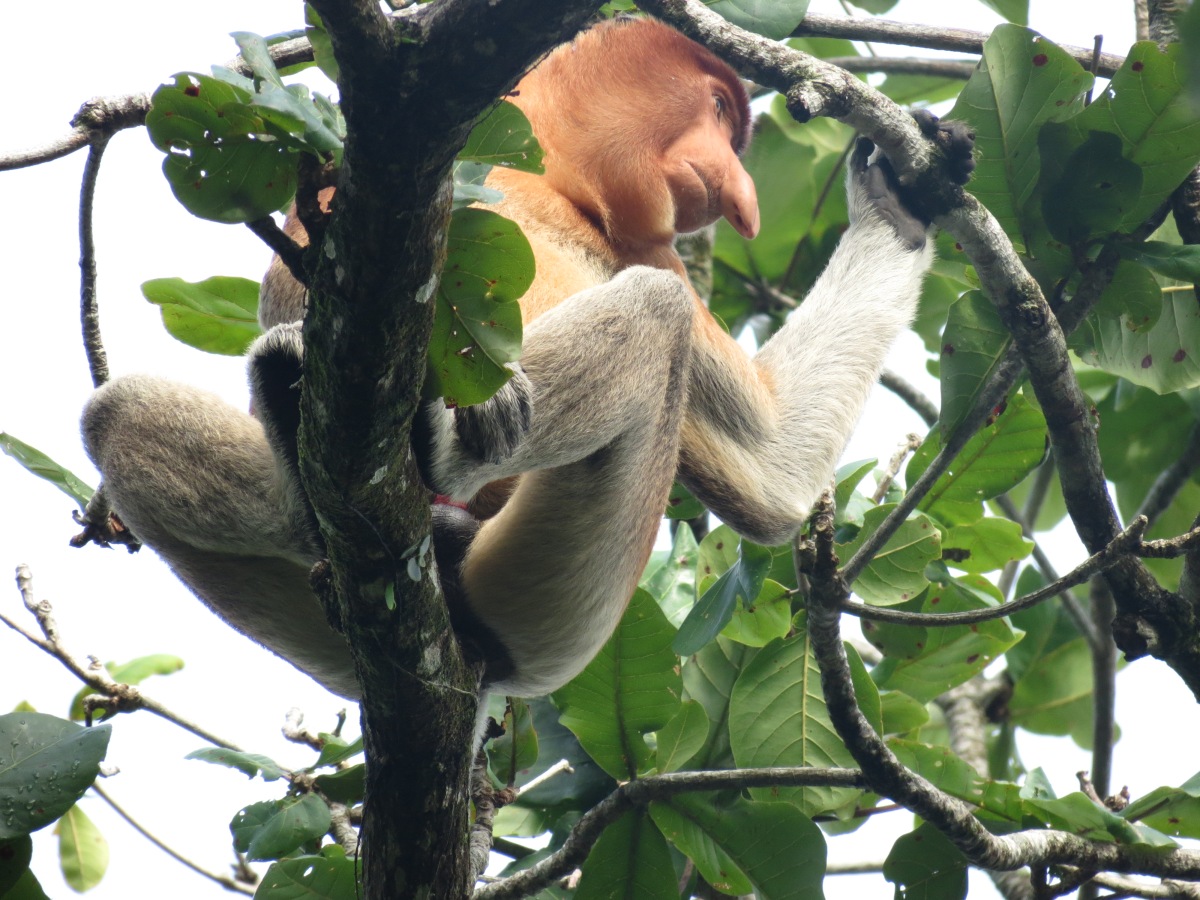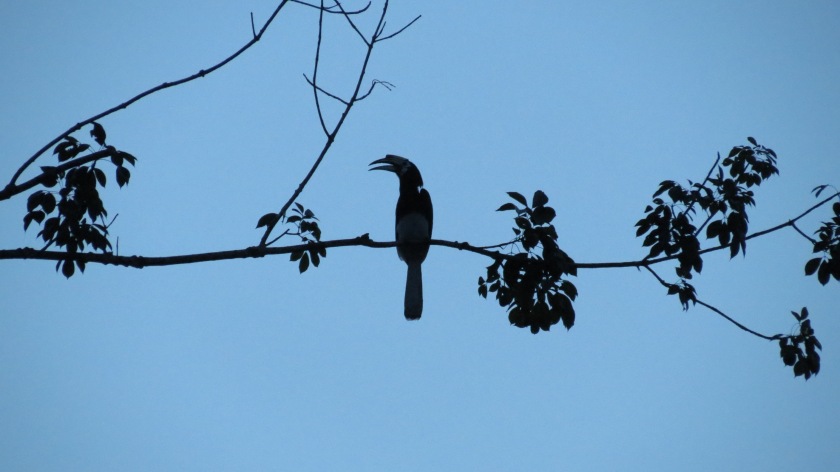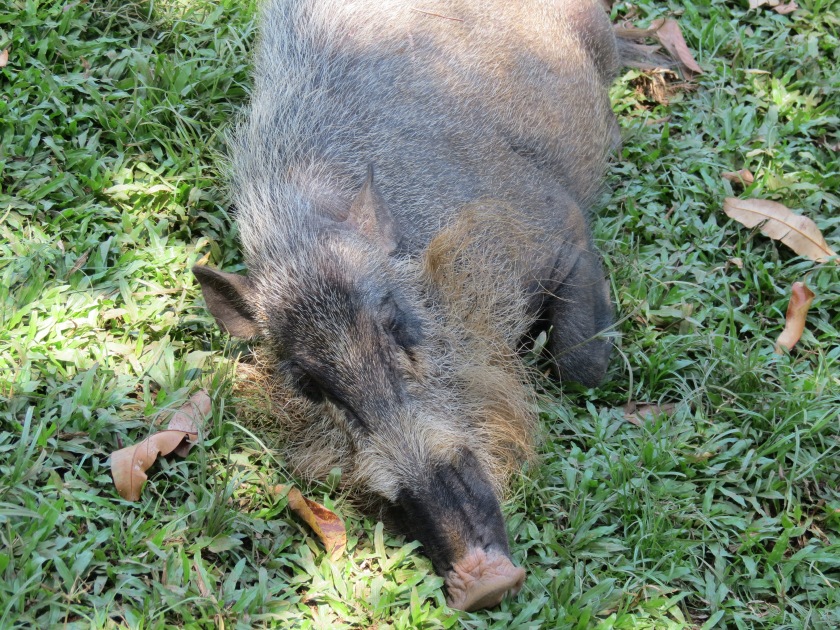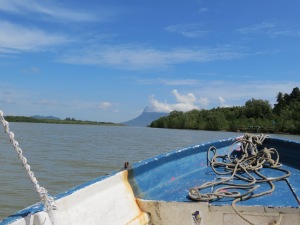Borneo – the land of hornbills, head-hunters, orang-utans and ‘where adventure lives’ according to many travel brochures: it could also be called the land of paradoxes.

For instance, Kuching, capital of Sarawak, East Malaysia, means cat, but the city was not named after a cat; it has a Sunday market that’s open on Saturday (and other days) and an India Street that has very few Indian shops.
Easy to love, this walkable city has a racial mix of about 23% Malay, 25% Chinese and 49% Dayaks, the collective name for the indigenous tribes, Sarawak epitomises the tourism tagline: Malaysia, truly Asia.
Walking down Bishopgate Street to Carpenter Street I talk to a Chinese man whose family have been ‘special makers of fancy coffins’ for three generations; across the road a man’s making cake tins on the footpath; around the corner Malay women are making their famous Kek Lapis, an intricate, colourful layer cake, and alongside my waterfront accommodation, a heavily, traditionally-tattooed Iban woman, creates delicious vegetarian meals to order.

Like all travellers in this national geographic showpiece, I want to see the endangered orang-utan. Just out of the city, at the Semenggoh Centre, about 70 people attend the twice-daily feeding. Free to range throughout this 300-hectare (740-acre) greenbelt there is no guarantee they will come to the feeding stations. We’re also warned to obey the staff as they have no control over their charges and photos show injured workers as proof!

At the feeding station a mother and week-old baby appear: despite being told to keep quiet, it’s hard to ooh and aah quietly! They’re delightful, the mother uses all four limbs interchangeably and sometimes it’s hard to tell if it’s her feet or hands she’s hanging from. She eats numerous ‘hotel-bananas’ as the little lady-finger bananas are called by locals as ‘all hotels serve them’, and a ripple of muted laughter spreads through the camera-clicking tourists when the baby tries to take one. A radio message comes for the ranger – Richie, the huge dominant male has made one of his rare appearances at the other feeding station and one by one we return down the track to where he is feeding.
He is huge! This ‘man-of-the-jungle’ has large cheek-flaps showing he is the king of this jungle and apparently he has already dispatched one pretender to the throne. A young male also arrives for a hand-out but keeps well away from Richie. As he crosses the rope that allows them to travel high above us, he stops to stare down at us, hanging mid-air like a kid on a school jungle gym. I have to laugh; he looks as though he is showing off to us, his DNA relatives, who are not so agile. Continuing on he shimmies down a vine and rope beside the small bridge we have just crossed and is given fruit. Richie just continues eating, a solid lump of muscle sitting on his man-made wooden picnic table.
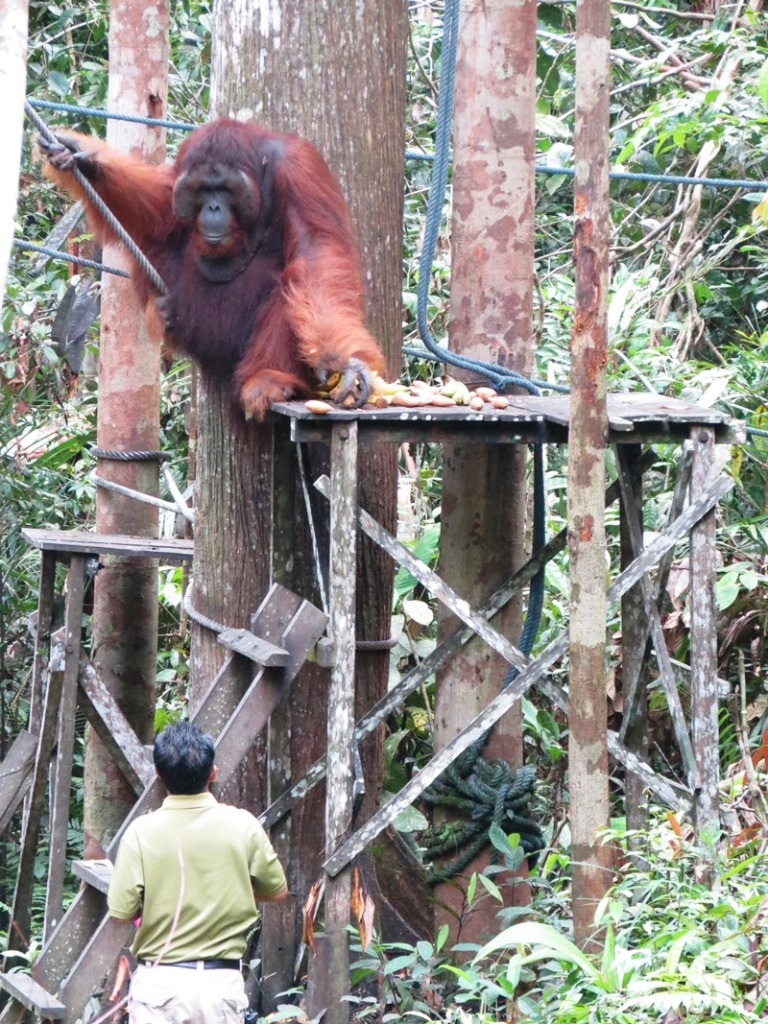
Two young women are warned to come back from the end of the viewing platform ‘until Richie leaves’ – I wouldn’t want to be in his way. He walks upright; with each step, his long hair sways just like a shampoo commercial. He stops and stares, or maybe glares, and I send a message of hope that the heart of Borneo will always be secure for him, and with one more stop and stare he strides off without a backward glance
He knows he’s safe from us physically but most travellers here are well aware of his need of our protection and, despite international concerns, it seems Sarawak is working to secure the orang-utans future, not an easy task.
Like some TV adverts say ‘but wait, there’s more’ in this fabulous area of East Malaysia: add a kayak trip from one Bidayuh village to the next; spend time at an Iban longhouse and of course, eat the delicious local food and explore the many excellent, free, museums. The three-day Rainforest World Music Festival (10-12 July 2020– set in the Cultural Village at Damai – is a must-attend for great local and international performers. I’ve been a few times and just love it!
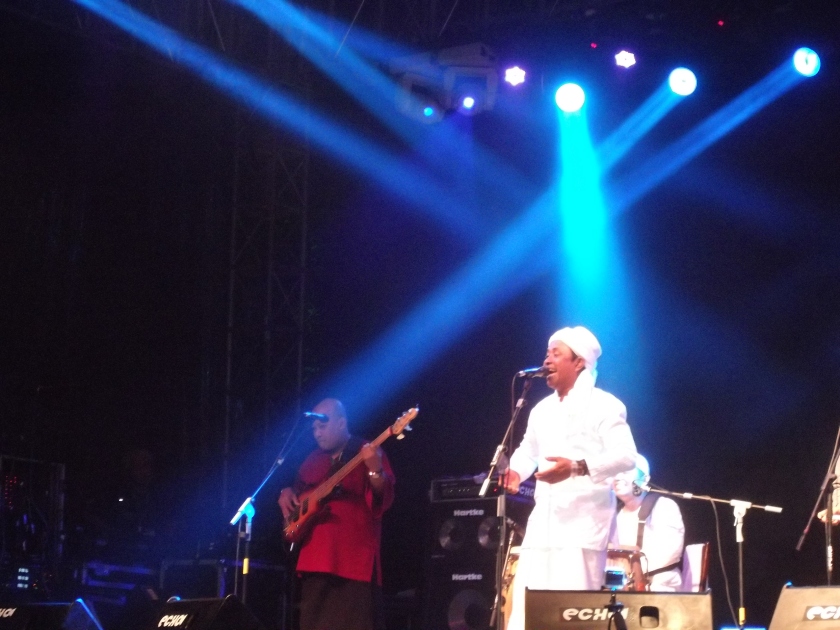

Also unique to this 3rd-largest island in the world, Borneo is the Proboscis monkeys. With a long straight pale tail, they leap clumsily from tree to tree and eating young shoots of indigestible foliage which breaks down in their two stomachs. Male vanity and the need to dominate means their nose can grow to such a pendulous length they have to hold it up to eat! Other males, lower in rank, have almost human or Pinocchio shaped noses and hang out in male groups until it grows bigger and they have the chance to challenge the leader and become the head of the harem. They are easy to see at the wonderful Bako National Park.

Borneo conjures up images of exotic adventures, an eccentric history, a White Rajah, wild animals, mystery and romance: my first travels there delivered, and I (the Kiwitravelwriter) soon returned to the land of head-hunters for even more exploring!


